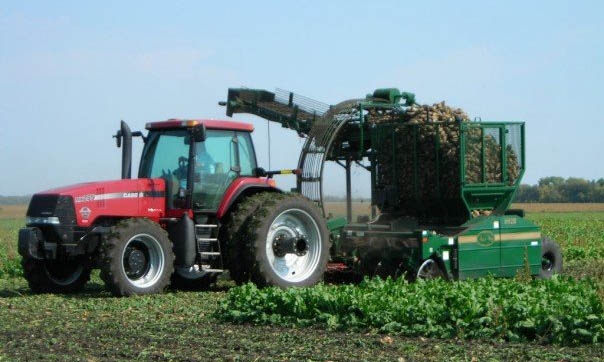January 12, 2012

U.S. Department of Agriculture (USDA) scientists are helping sugar beet producers increase yields, protect their produce from disease, and boost profits. The research conducted by Agricultural Research Service (ARS) scientists in Kimberly, Idaho, supports the USDA priority of promoting international food security. ARS is USDA's chief intramural scientific research agency.
ARS plant pathologist Carl Strausbaugh and ARS molecular biologist Imad Eujayl have studied sugarbeets from the field—where a strong wind can twist tiny seedlings right out of the ground—to the processing factory. Some of their work has focused on the root disease called rhizomania, which is caused by beet necrotic yellow vein virus (BNYVV) and reduces sugar levels in harvested beets. A single dominant gene in sugarbeet helps protect the plant from rhizomania, but some strains of the virus have evolved to overcome this genetic resistance.
For two years, the team grew approximately 30 commercial sugarbeet varieties in fields that were naturally infested with BNYVV. Then they collected samples from each variety—all of which showed some evidence of typical rhizomania infection—and calculated the average sugar content of each variety.
After harvest, other beets grown in the experimental fields were stored either indoors or outdoors for more than four months. In a post-storage survey, the scientists found that the beets stored indoors had lost as much as 100 percent of their sugar content, and that the sugar content in beets stored outdoors had dropped as much as 60 percent. The scientists also observed that the beet varieties exhibiting the greatest resistance to rhizomania and good storability—indicated by the lowest levels of fungal growth and lowest levels of weight loss from root damage—also had the highest sugar levels.
The team also developed a set of genetic markers for beet curly top virus that plant breeders could use in developing curly top-resistant sugarbeet varieties. They identified 11 genetic markers that were significantly associated with resistance to curly top and found that five of the 11 markers were linked to phenotypic resistance traits.
Results from this work have been published in Plant Disease, Journal of Sugar Beet Research, Phytopathology, and elsewhere.
Read more about this work in the January 2012 issue of Agricultural Research magazine.
You May Also Like




